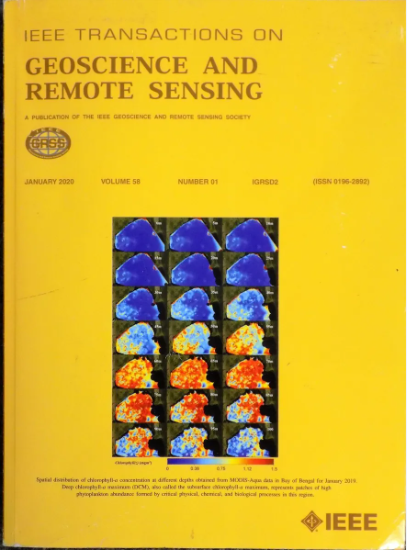Content-Biased and Style-Assisted Transfer Network for Cross-Scene Hyperspectral Image Classification
IF 7.5
1区 地球科学
Q1 ENGINEERING, ELECTRICAL & ELECTRONIC
IEEE Transactions on Geoscience and Remote Sensing
Pub Date : 2024-09-11
DOI:10.1109/TGRS.2024.3458014
引用次数: 0
Abstract
Cross-scene hyperspectral image (HSI) classification remains a challenging task due to the distribution discrepancies that arise from variations in imaging sensors, geographic regions, atmospheric conditions, and other factors between the source and target domains. Recent research indicates that convolutional neural networks (CNNs) exhibit a significant tendency to prioritize image styles, which are highly sensitive to domain variations, over the actual content of the images. However, few existing domain adaptation (DA) methods for cross-scene HSI classification take into consideration the style variations both within the samples of an HSI and between the cross-scene source and target domains. Accordingly, we propose a novel content-biased and style-assisted transfer network (CSTnet) for unsupervised DA (UDA) in cross-scene HSI classification. The CSTnet introduces a content and style reorganization (CSR) module that disentangles content features from style features via instance normalization (IN), while refining useful style information as a complementary component to enhance discriminability. A contentwise reorganization loss is designed to reduce the disparity between the separated content/style representations and the output features, thereby enhancing content-level alignment across different domains. Furthermore, we incorporate batch nuclear-norm maximization (BNM) as an effective class-balancing technique that directly exploits unlabeled target data to enhance minority class representations without requiring prior knowledge or pseudolabels, achieving better distribution alignment. Comprehensive experiments on three cross-scene HSI datasets demonstrate that the proposed CSTnet achieves state-of-the-art performance, effectively leveraging content bias and style assistance for robust DA in cross-scene HSI classification tasks. The code is available at:用于跨场景高光谱图像分类的基于内容和风格辅助传输网络
跨场景高光谱图像(HSI)分类仍然是一项具有挑战性的任务,因为源域和目标域之间的成像传感器、地理区域、大气条件和其他因素的不同会导致分布差异。最近的研究表明,卷积神经网络(CNN)表现出一种明显的倾向,即优先考虑对域变化高度敏感的图像样式,而不是图像的实际内容。然而,用于跨场景 HSI 分类的现有域适应(DA)方法很少考虑 HSI 样本内部以及跨场景源域和目标域之间的风格变化。因此,我们提出了一种新颖的基于内容和风格辅助的转移网络(CSTnet),用于跨场景 HSI 分类中的无监督 DA(UDA)。CSTnet 引入了内容和风格重组(CSR)模块,通过实例归一化(IN)将内容特征与风格特征分离开来,同时提炼有用的风格信息作为补充成分,以增强可识别性。内容重组损耗旨在减少分离的内容/风格表征与输出特征之间的差异,从而增强不同领域的内容级对齐。此外,我们还将批量核规范最大化(BNM)作为一种有效的类平衡技术,直接利用未标记的目标数据来增强少数类表征,而无需先验知识或伪标签,从而实现更好的分布对齐。在三个跨场景人机交互数据集上进行的综合实验表明,所提出的 CSTnet 实现了最先进的性能,有效地利用了内容偏差和风格辅助,在跨场景人机交互分类任务中实现了稳健的 DA。代码见:https://github.com/nbdszw/CSTnet。
本文章由计算机程序翻译,如有差异,请以英文原文为准。
求助全文
约1分钟内获得全文
求助全文
来源期刊

IEEE Transactions on Geoscience and Remote Sensing
工程技术-地球化学与地球物理
CiteScore
11.50
自引率
28.00%
发文量
1912
审稿时长
4.0 months
期刊介绍:
IEEE Transactions on Geoscience and Remote Sensing (TGRS) is a monthly publication that focuses on the theory, concepts, and techniques of science and engineering as applied to sensing the land, oceans, atmosphere, and space; and the processing, interpretation, and dissemination of this information.
 求助内容:
求助内容: 应助结果提醒方式:
应助结果提醒方式:


